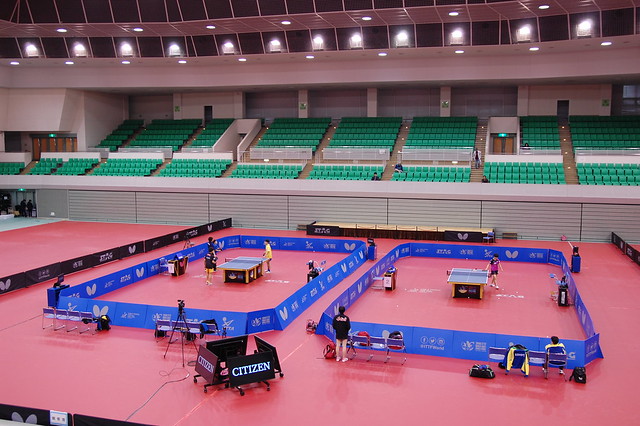by Ian Marshall, Editor
Now charged with emulating their predecessors, Poland’s Maciej Kubik, Myshaal Sabhi of France and Belgium’s Adrian Rassenfosse, alongside Germany’s Mike Hollo form the European Boys’ Team; for the girls, Romania’s Elena Zaharia and Russia’s Elisabet Abraamian join forces with Sweden’s Rebecca Muskantor and Lithuania’s Kornelija Riliskyte.
Can they emulate the players of 13 years ago? In both events they are the top seeds.
In their opening contest on Saturday 27th October, the European Boys’ Team face Oceania who select from New Zealand’s Nathan Xu, Australia’s Finn Lu, Fiji’s Vicky Wu and New Caledonia’s Emmanuel Bruchard.
Also in the same group to be confronted later in the day appears Asia and the Hopes Team. Asia selects from Iran’s Radim Khayyam, China’s Zeng Beixun, Chinese Taipei’s Wang Guan-Ru and Korea’s Hwang Jinha; for the Hopes Team, the squad comprises Romania’s Iulian Chirita, Singapore’s Isaac Quek Yong, Spain’s Daniel Berzosa and Yemen’s Abdulhakim Ebrahim Gubran.
Meanwhile, for the Girls’ Team, their initial opponents are Africa; their squad comprises Egypt’s Hend Fathy, Tunisia’s Maram Zoghlami, Algeria’s Melissa Belache and Oumehani Hosenally from Mauritius. In the same group Japan’s Kaho Akae, Hikari Okubo, Yukari Sugasawa and Honami Nakamori appear alongside the North American contingent of Rachel Sung and Rachel Yang from the United States who team with Benita Zhou and Kelly Fei Zhou from Canada.
Two groups in the initial stage of proceedings in each event, four teams in each group, outfits finishing in first and second positions advance to the semi-finals; those finishing in third and fourth places compete for places five to eight.
The Boys’ Team and Girls’ Team events conclude after two days of action on Sunday 28th October; the following day the individual events commence. Proceedings come to an end on Wednesday 31st October.


